
Many people talk about moving out of the city to improve their health and well-being, and to find a way to break their reliance on Big Agriculture and processed foods. To return to the land while seeking community and a better environment for themselves and their children. Grow their own food, have some chickens, and perhaps a few cows. This is the story of two people, an older couple with a longstanding marriage and commitment to each other, who made it happen with persistent effort, creativity, and years of hard work. It is a story of resiliency, of solving a thousand small problems, and of finding ways to work around obstacles.
It is a story of the modern “Victory Garden.” Never forget that when the US Government promoted victory gardens during WWI and WWII, in aggregate the resulting small-holding agricultural output came to rival the total yield of established corporate agriculture.
A little over eight years ago, Jill and I had become fed up with dealing with yet another quirky small farm landlord, and decided that it was finally time (once again) to buy our own place here in rural Virginia. This would be our sixth small farm, some owned and some leased. We had a long history of being involved in small-scale farming, beginning in our teen years spent in the central coast region of California with Avocado and Lemon orchard work. But that was before University, Med School, and chasing a career in academia. I had also worked as a carpenter when I was younger, so I have reasonably good construction skills.
Like many, we had been financially devastated by the “Great Recession” of 2007 - 2009, losing all the equity we had built up over decades of home and farm ownership. Having relocated our family and our horse breeding business from Maryland down to Northern Georgia due to a new job (a BARDA contract for developing cell-based influenza vaccines), we had sold our 45-acre farm outside of Frederick, Maryland, and purchased an old chicken farm in Northern Georgia, converting a chicken barn into a horse barn, building out the fences and infrastructure for a horse farm and homestead. The real estate market collapsed, and so did the BARDA contract. We tried to stick it out for years even though the mortgage was hundreds of thousands of dollars underwater.
We homeschooled our younger son and got him into Junior College and then through Georgia Tech while making ends meet by consulting, with frequent trips up to DC for clients. But by then it became clear that the vanished equity would never be recovered. All around us, friends had resorted to “Deed in Lieu of Foreclosure,” but for years, we just stuck it out- it just did not seem right to bail out on our contract with the bank. Finally, it just became untenable, and we did what we had to do to stay solvent. We drove up the eastern seaboard looking for where we could relocate and lease another farm, and settled on Virginia, close enough to DC so that I would not have to continue to shuttle on planes but far enough away so that we could lease a small farm and keep our horse breeding operation.
Two leased small farms and a lot of landlord drama later, we had completed the penalty box penance period that the banks and credit agencies apply to any so bold as to “mail in the keys” and walk away from an upside-down mortgage. So, it was finally time to start looking for a place we could call our own. I will never understand why the Obama administration made the banks whole with taxpayer dollars but did almost nothing to help the middle class that had been so devastated by the “Great Recession.” There was just nothing to be done about it other than to adapt to this new reality in which we had been shorn like sheep of the hundreds of thousands of dollars in home equity we had jointly developed during our long marriage.
Jill has an amazing ability to find real estate deals over the internet, and she found 29 acres that were “for sale by owner” (FSBO) in Madison, VA. We drove 45 minutes from our leased farm to look at the new property, and it checked most of the boxes we had listed based on our prior experience. A large year-round creek wrapped around the property, promising plenty of groundwater. Sheltered by rolling hills but with enough flatland. The owner was quirky but willing to hold a 5% mortgage. But no well, no power, no septic, no habitable buildings, no fences for our breeding horse herd. Just rough hayfield with three old buildings that were in various stages of falling down and decay, plus the rusty remains of nails and metal roofing from a large barn that had been burned by arsonists. That would be the big barn in the 1975 photo of the farm below. From 1975 until 2017, when we bought the place, it was essentially abandoned. None of these buildings were habitable, most were falling down and all were covered with poison ivy and other climbing vines. The county didn’t even know that buildings had once existed on the property.
Below is a short video from 2017, where I am removing the debris from the 2003 fire that took out that barn above. The metal from the roof had been left to rot for fifteen years.
It was a scenically beautiful land, and we could afford it.
The one thing it did not have was high-quality soil, but we knew that our horses produce the essential ingredient for regenerating the soil - manure rich in the very things that rocky clay needs. It would take time, but with the help of our horses, we could turn this into a productive farm. And that has taken time; this farm was once a rock quarry yard and the back forest on our land actually hosts a quarry pond - from back in the 1960s. Hence, gravel had been piled up everywhere. Not only was the top soil gone, much of our land also has a layer of gravel buried deep under.
Eight years ago we took the leap. When younger, we had been avid backpackers, rock climbers, and lovers of the wilderness, and knew we could live simply and still be happy- with our horses and four dogs. Jill found a used 400 square-foot office trailer for a modest price, we purchased and hung the used cabinets obtained from “Habitat for Humanity.” Then, we set up an illegal dwelling, which was basically that small office trailer, back in the trees of the new property, and got to work.
The local power company quickly set up a meter, so we had power. Once upon a time the property had a septic system and drew water from the creek. However, we could never find the septic, and could not bring the old water system back to life. So, long story short, the local well drilling company took pity on us (and our horses!) and quickly came out and drilled us a 400-foot well - once we had a permit from the county. We contracted for a port-a-potty to be dropped near the office trailer, and joined a local health club so we could take a real shower now and then.
We began rebuilding what was once either a house or a store on the property, but the county shut us down. So we took another loan and bought a pre-manufactured home - quite literally, a double-wide mobile home. I once said I would never live in a double-wide, but in the end this was all we could afford. And of course we contracted out for a septic system. Living large! I functioned as the general contractor to save money. So many permits, so much time spent dealing with arbitrary and capricious local bureaucrats and inspectors. We made it work, and now it makes a fantastic guest house, perched up on a hill with a magnificent view from the large porch we built out back.
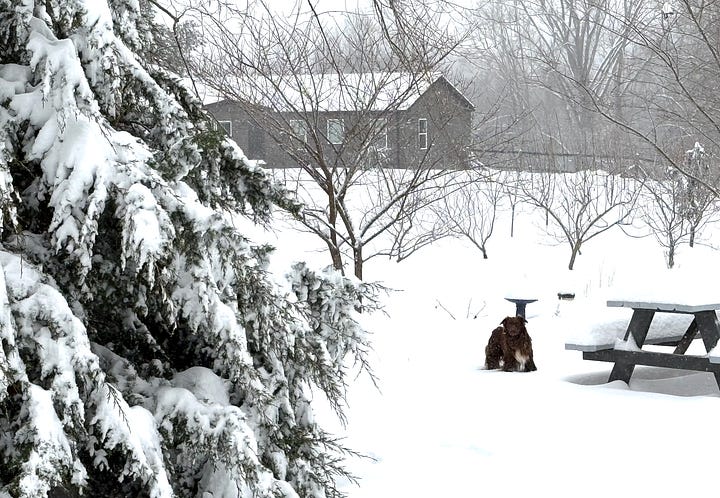
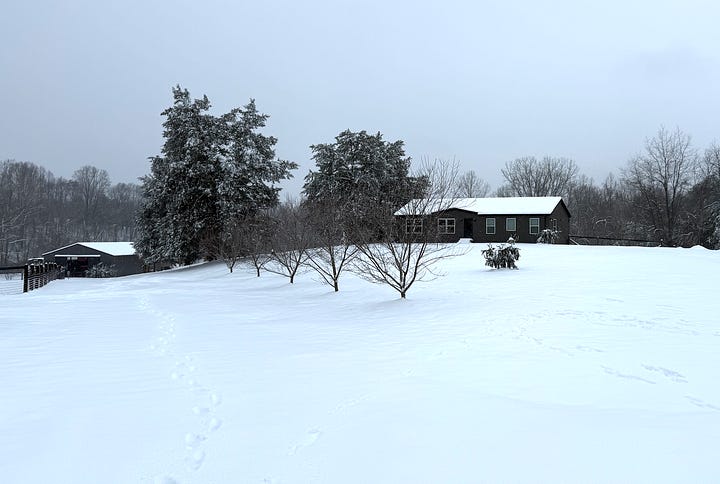
As we came with a horse breeding operation consisting of about 10 mares and a stallion, the fencing issue had to be solved immediately. So, at first the horses were contained using solar-powered electrical fencing. Later on, we became early adopters of a new fencing technology that had been locally developed involving an amazing machine that literally taps six-inch posts right into the ground without the need to drill a hole and fill with cement.
Before winter set in, we built four transportable run-in sheds to give the horses shelter.
We had sold our prior tractor to come up with the down payment and were able to get a 0% loan from Kubota for a new one. Of course, we started planting fruit trees and a garden. As the season was winding down, the local WalMart had a bunch of fruit trees at a deep discount, and we snapped them up, forming the initial basis for what is now a thriving orchard of about sixty trees.
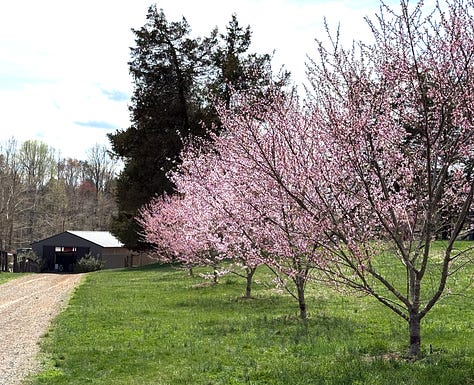
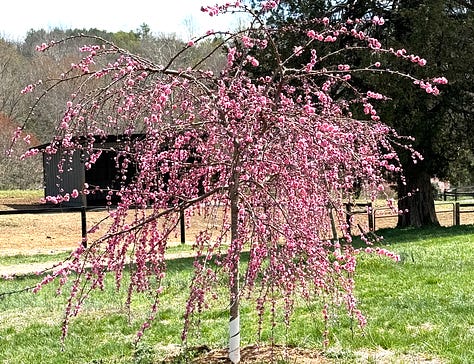
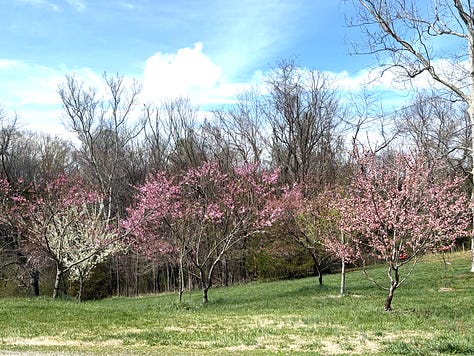
All the while using composted horse manure to enrich the garden beds, surround the tree balls, and to mulch everything. Soon there were abundant earthworms where before there had just been hard clay mixed with quartz rocks.
Eight years later, five of which were spent under the COVID crisis, and the 1945-era cinderblock pig barn that was falling down is now a broadcast studio. We were able to convince the county that we were actually serious about farming - and so qualified for a farm exemption on building permits for barns, run-in sheds, storage buildings, etc.
Now, two legally permitted homes are on the property and two barns- one new and the other completely rebuilt. All are owned and completely paid for, as is the property. Financially speaking, we had returned from the dead within a decade.
With no recent credit history, and no debt, the various credit rating agencies assigned a credit score of zero (!), so we had no choice other than to tough it out! Recently, I decided to do something about the credit score so that we could get a loan from our local farm credit company, so I bit the bullet and bought a used car at a very high interest rate, paid it down quickly, and then the credit rating companies decided they could issue credit scores and suddenly we had an excellent rating. What a scam. Now the farm bank has provided the construction loan we need to build a covered riding arena so we can train horses through both winter storms and high summer sun.
Remember those fruit trees? I just planted five more last weekend. Bit by bit, the orchard is growing. Jill is now buying more difficult-to-find sapling trees over the internet, which seems to be working out, with an emphasis on nut trees like walnuts and almonds. The peaches, plums, pears, apples, and a few exotics are thriving. We have thornless blackberries along the deck behind the double-wide and a bunch of raised beds with hoops and netting for the veg. As most of our soil is still deficient, we do rely on raised beds and container gardening for much of our vegetable crops.
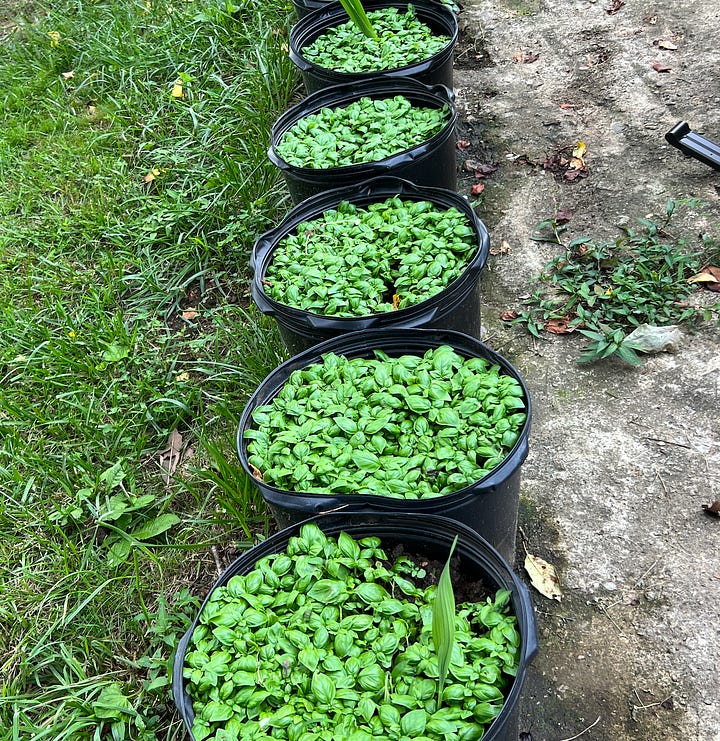
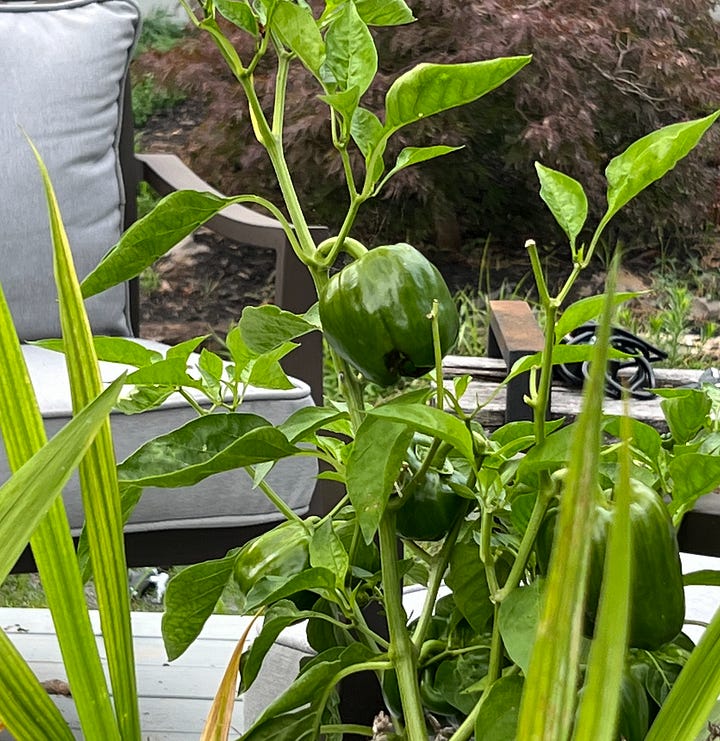


Last year we built a 12x43 sq. foot greenhouse out back of the old building that we have turned into an “Agricultural center” where we often work and occasionally have community meetings. That greenhouse is working out great for both overwintering citrus, herbs, tender perennials, as well as starting tomatoes and other vegetable plants.
Year after year after year. Slowly, patiently working away from day to day. This is how the Amish and Mennonites do it. Rome was not built in a day.
In addition to more fruit and nut trees, this year, we have decided to try to produce our own wheat. Commercial bread is so expensive, and so much of our grain is contaminated by desiccants (like Roundup) and other toxins. By this point, we have accumulated a wide range of tractor implements, and of course, we have an endless supply of composted manure. Planting wheat on rocky clay soil would be a fool’s errand, and the local deer would likely gobble up whatever did germinate. So we took a fenced horse paddock that is not being used, about a quarter of an acre, and added a whole lot of partially composted barn bedding shavings mixed with horse manure and urine. Tractor bucketloads of shavings and manure were dumped onto the rocky clay and let to sit for a month or so. Finally, I spread that out with the tractor bucket, then dug it into the clay with a small spring harrow and finished the soil off with a rototiller.
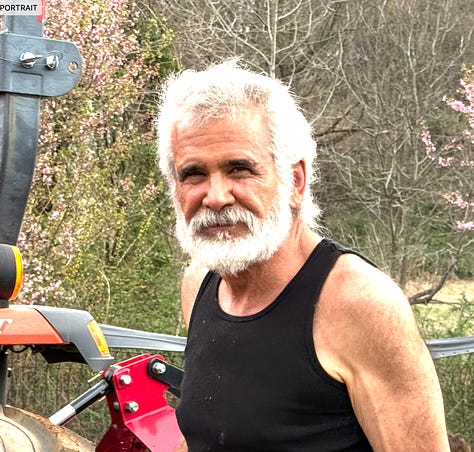
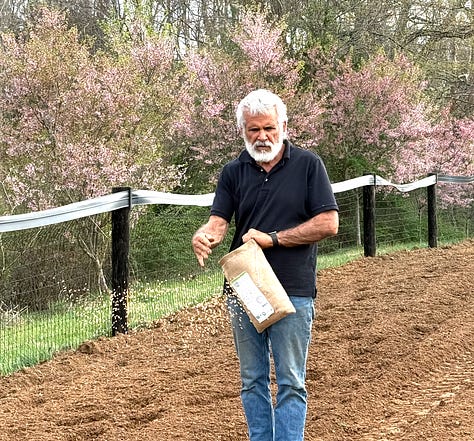
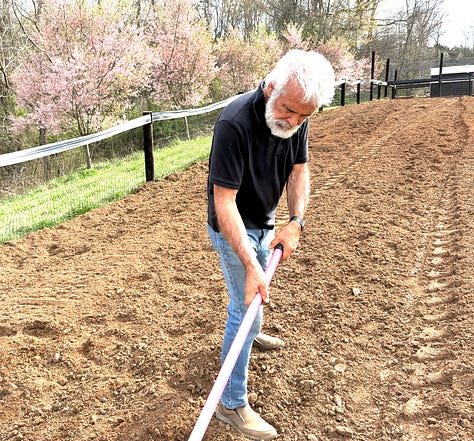
A bit hard on any worms or other soil critters that might have been there, but now they will have a lot of organic material that they can dig into. Based on past experience, that plot will now become more fertile over time. Onto the mix was cast organic wheat “berries” (purchased from Amazon), a good raking to bring the seeds down to 1-2 inches below grade, and then a convenient thunderstorm last night with an inch of rain should get the seedlings started. The next few weeks will be both wet and a bit cold, so Jill and I have high hopes for our little test plot of organic, horse manure-fed wheat! High hopes for a successful harvest next fall.
Once upon a time, back in Georgia, we had miniature Jersey cows that we milked, and we have decided to get back to that on a small scale, mostly breeding A2/A2 mini-Jerseys for sale to other homesteaders and small landholders, so deposits have been made so that we can get in line for a few of this year’s calves.
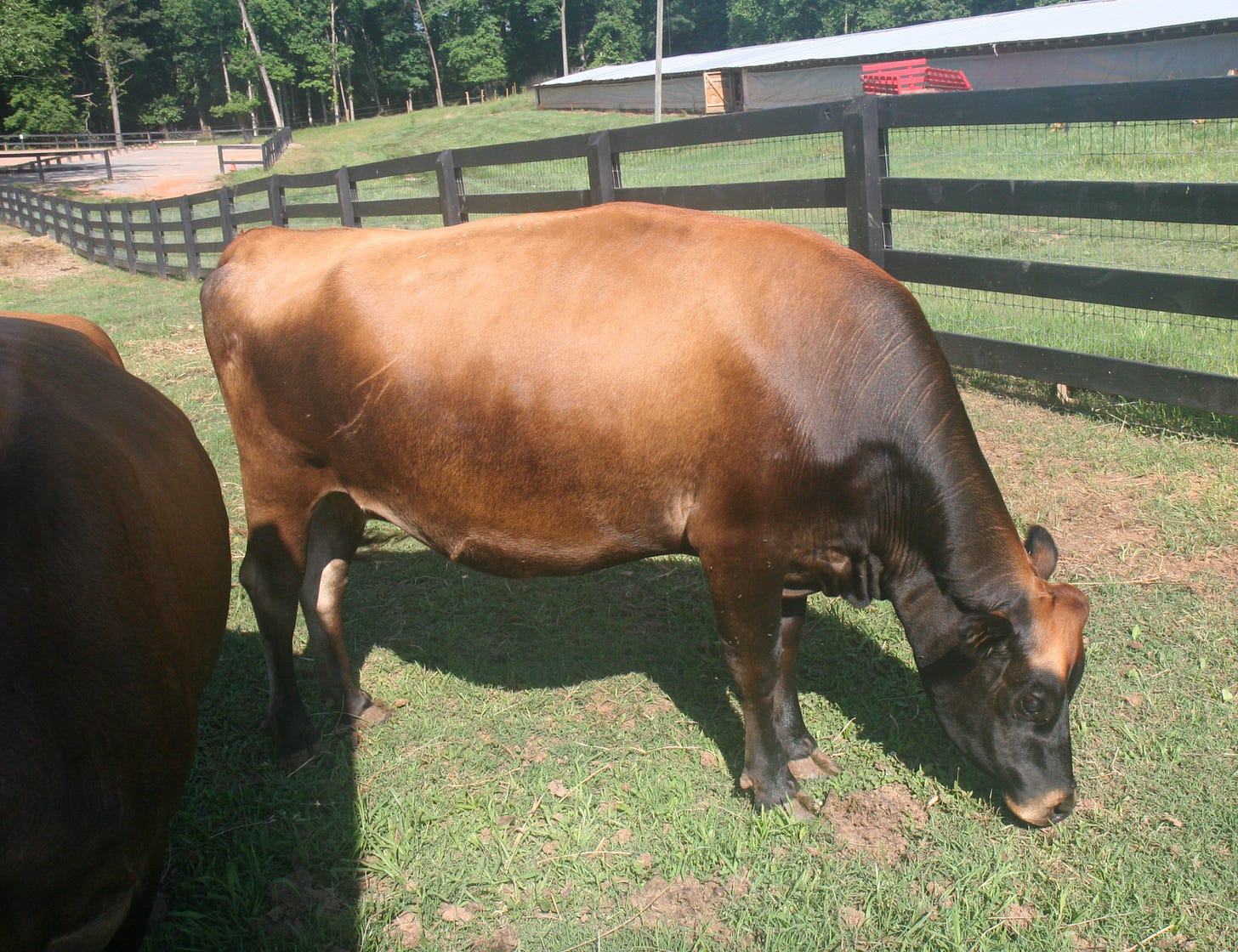
And of course, the chickens. Always the chickens. More eggs than we can eat (which the dogs benefit from), and last year, we processed a lot of roosters, many of which are still in the freezer.
And guinea fowl. So many guineas… which if the eggs are incubated, breed like popcorn.
Now, people visit our little plot and talk about it being a slice of heaven on earth. And when the wild birds are out and about, the sun is shining, this year’s foals are playing in the new green grass, and the fruit trees are in bloom, it is hard to argue otherwise. All it required was years of work, commitment, a stable partnership between two people, creativity, and a bit of luck.
Making America Healthy Again from the bottom up, one day, one week, one month, and one year at a time. Beginning with building your own bit of heaven on earth. Soil, water, manure, love, and tincture of time.
We did it, and so can you.
To end, this is a video Jill put together mostly of our Percheron draft horses that we used to breed, train and drive with. This video is over fifteen years old - so it isn’t the quality of some now. But it still tugs at our heart strings.
The thing about homesteading is that diversifying is how to make them sustainable. In our case, we have the currently utilize the niche markets of exotic poultry and horses. We have also bred mini jersey cattle, dogs, and trained and coached others to drive and ride horses.
For a small farmer - one has to follow the market trends.
Anyway, this is one of my favorite songs - set against some our favorite horses from the past.

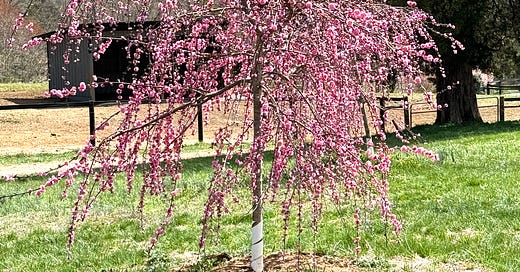



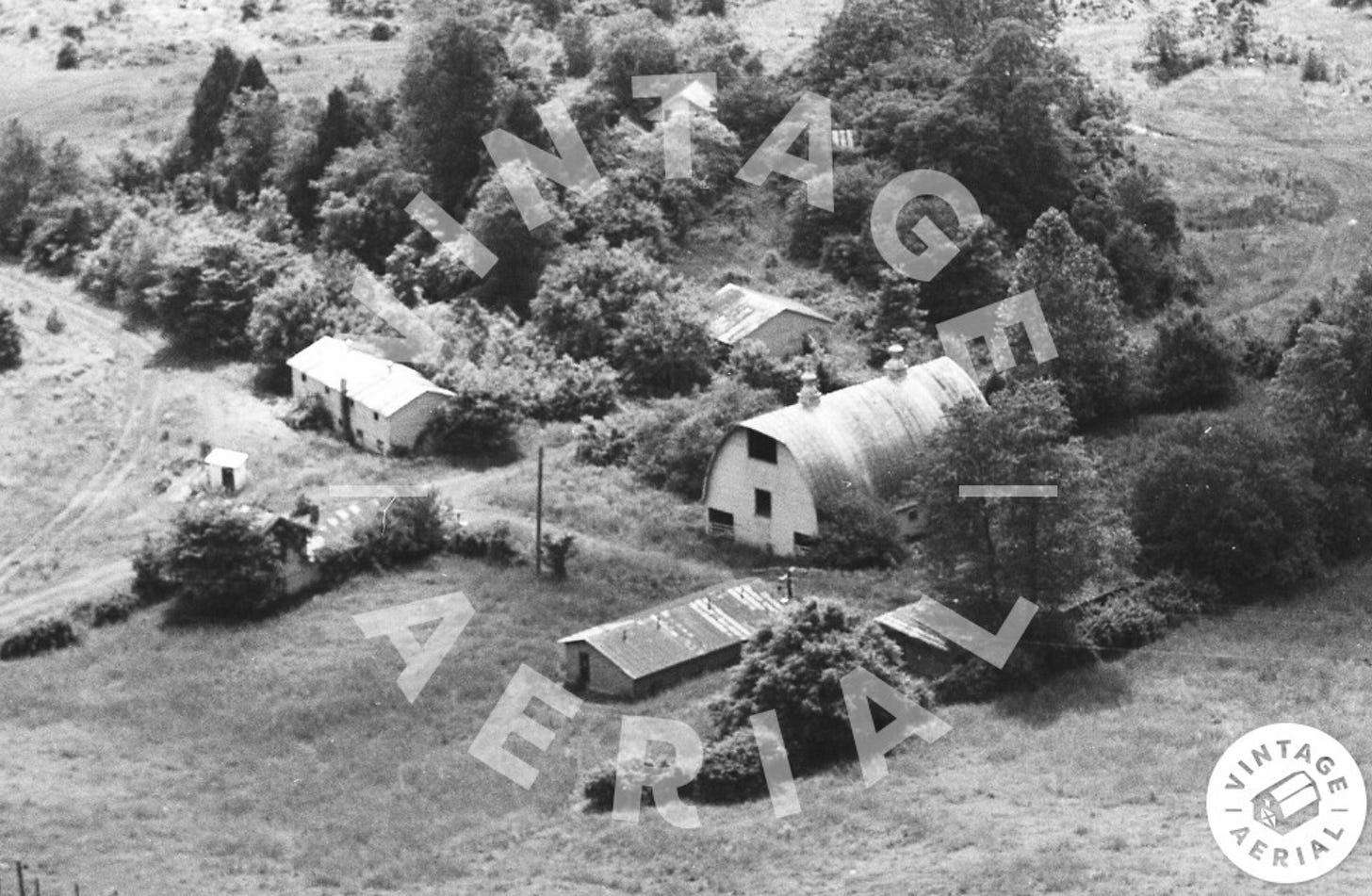
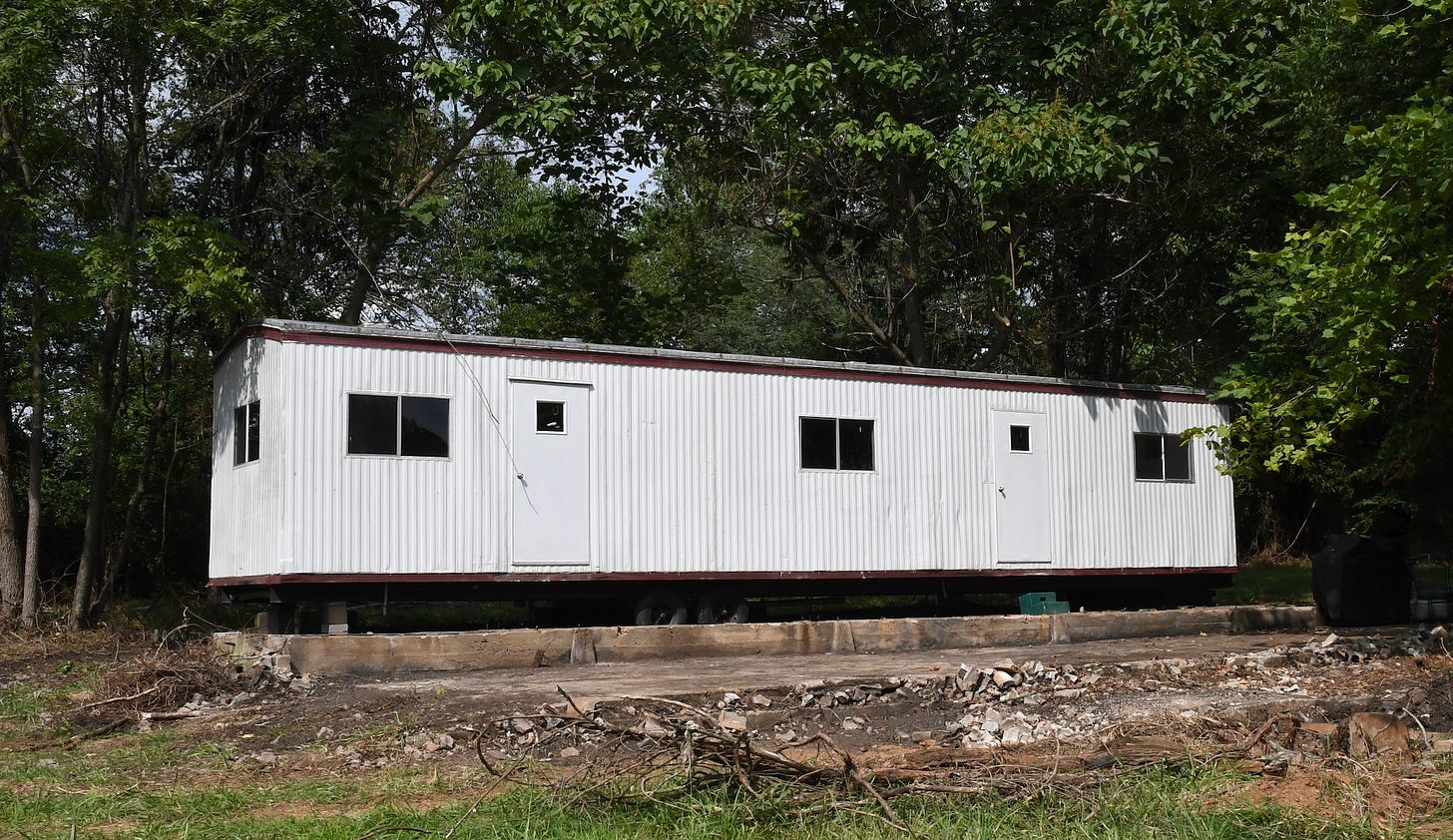
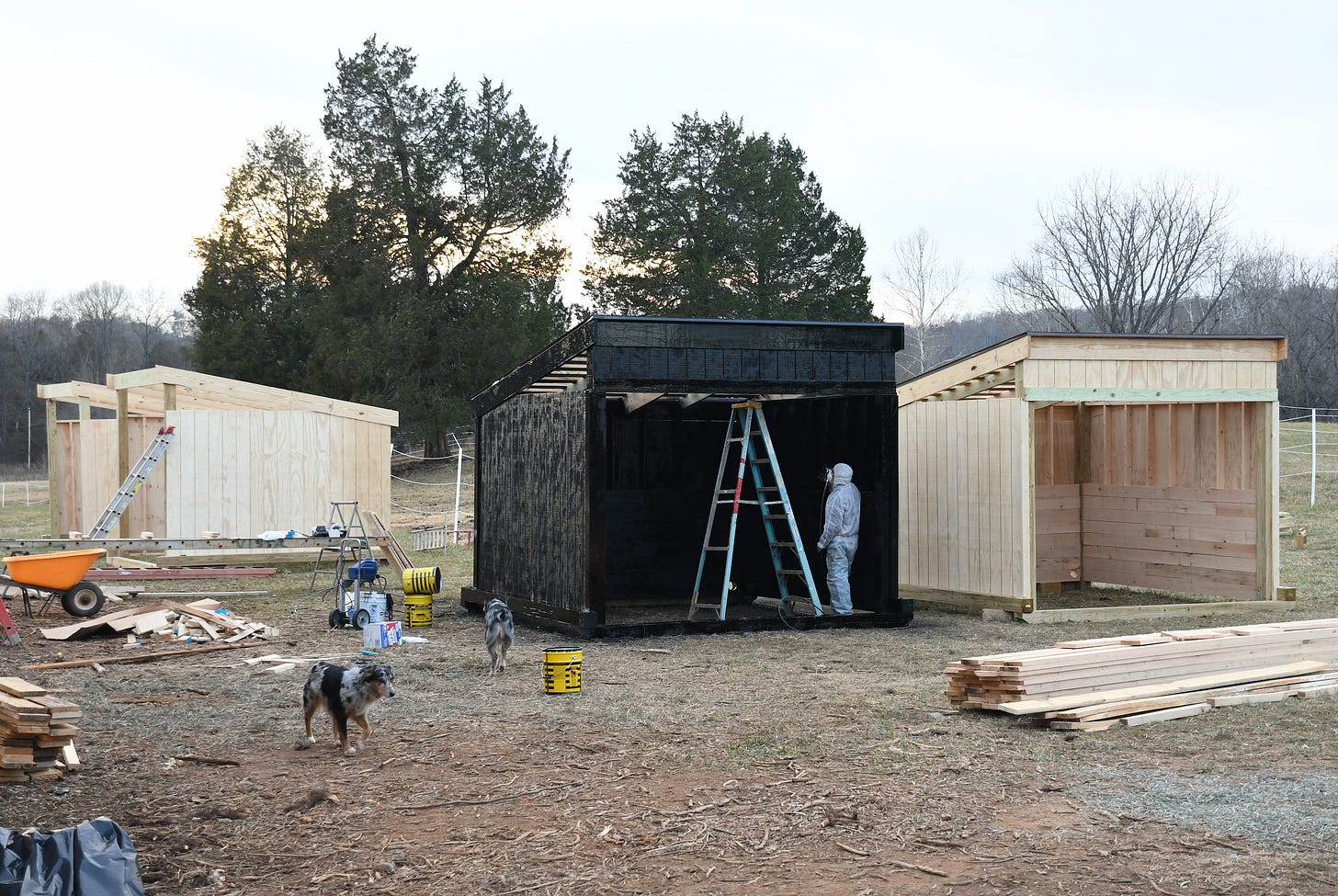
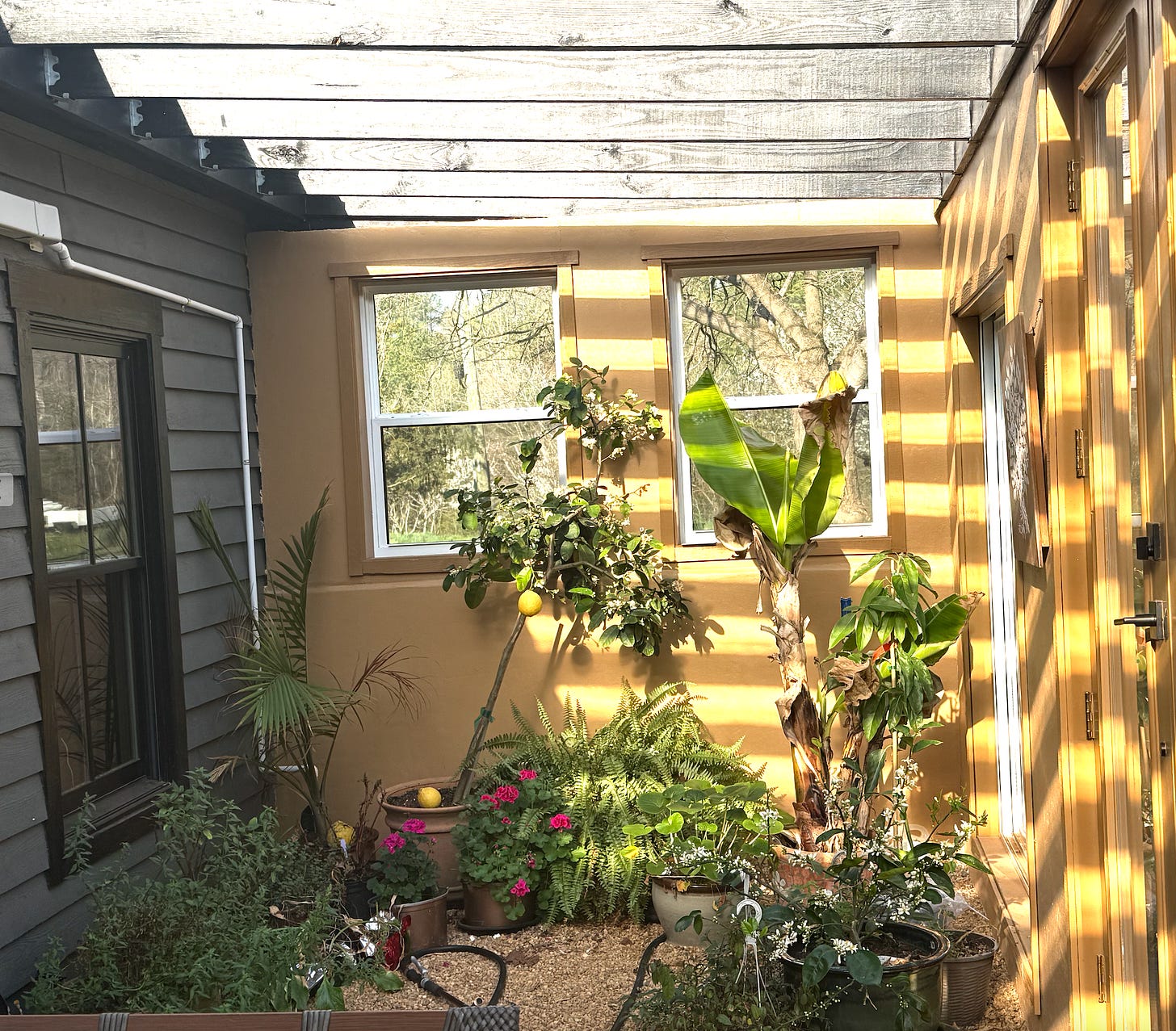
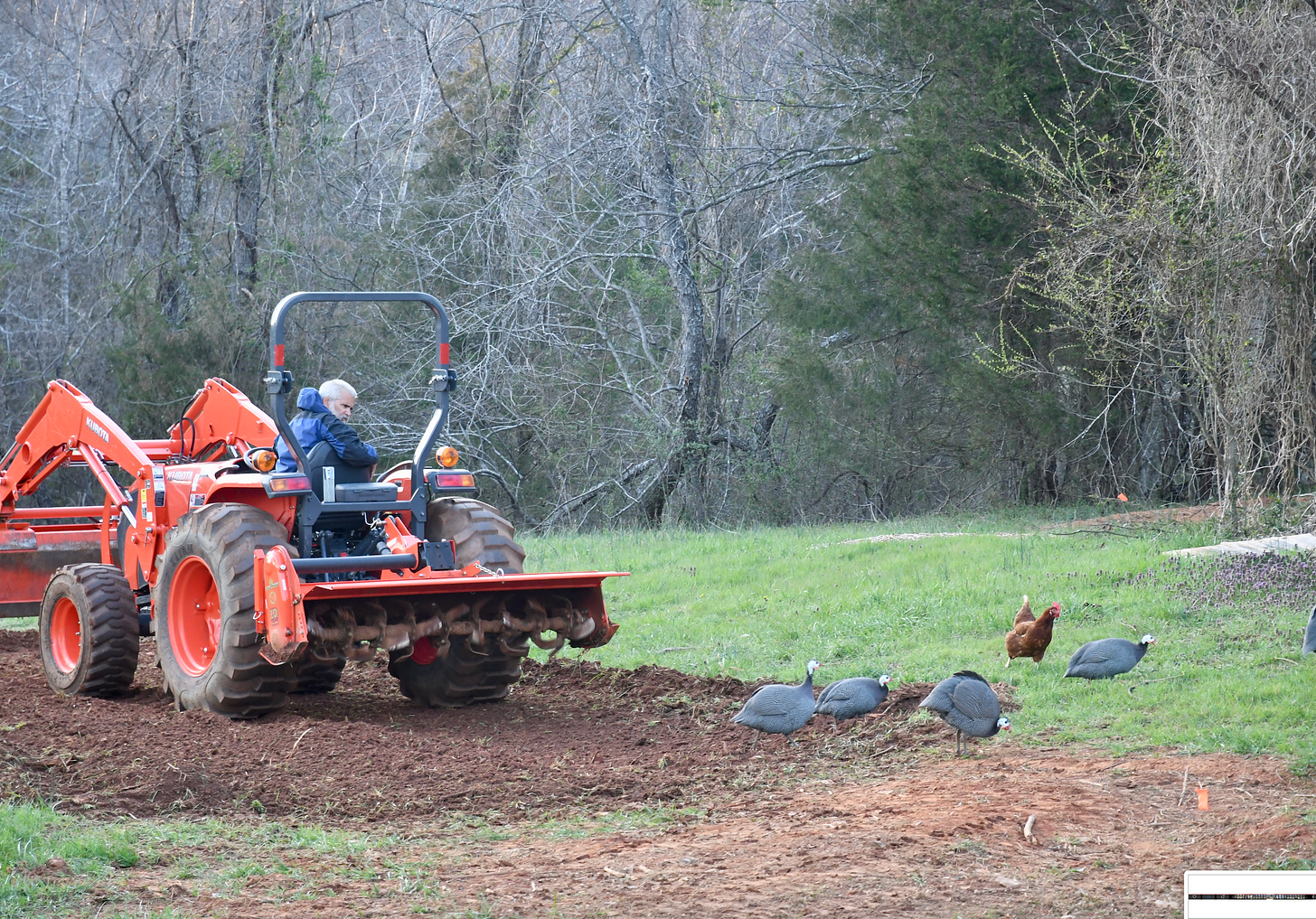










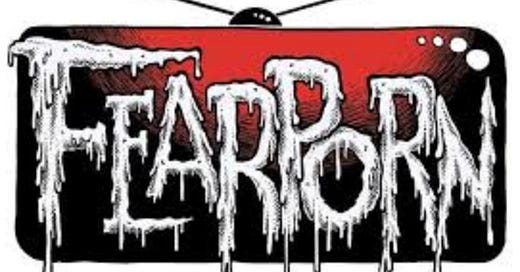

What a wonderful life you have built and continue to expand. You two are such an inspiration to so many of us. Please continue sharing your lives, I love it.
Keep on Rolling those dice Robert.....The well lived life is alive and well within.
Life is always about risks and rewards.
I ring my gratitude bell each waking morning!
I'm quite certain many of us readers here, are in that Club!